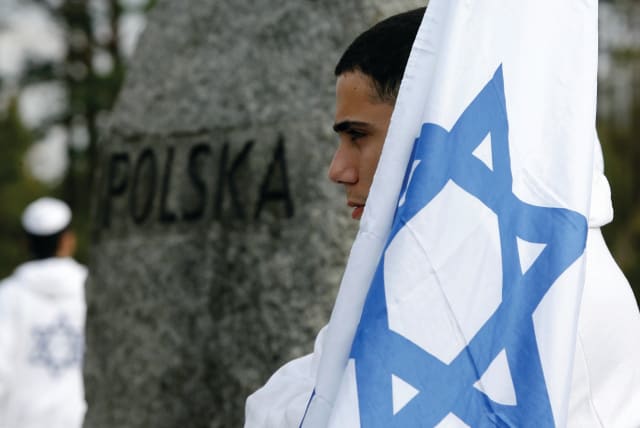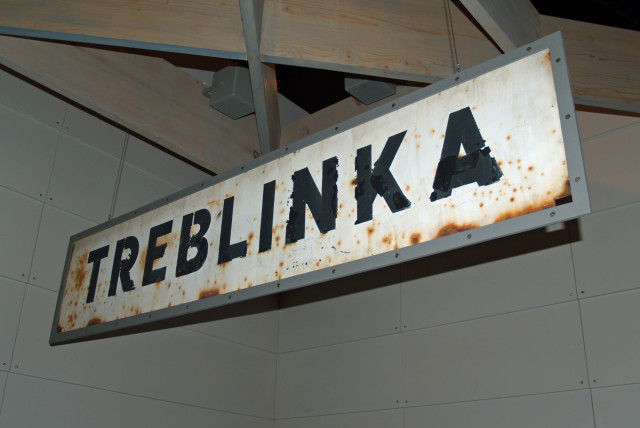'Four Winters': Documentary honoring partisan Holocaust survivors - opinion

Four Winters is more than a vital historical record of courageous Jews who managed to stand up against the Nazis.
Filmmaker Julia Mintz is on a time-sensitive Holocaust remembrance and education mission. As the last victims of the Nazi genocidal campaign against European Jewry pass, and antisemitism again is on the rise across the United States and Europe, Four Winters, her newest film, could not be more crucial.
“Four years in the woods I was a partisan and I survived. Why? Why me?” Gertrude Boyarsky, one of eight people featured in the 90-minute documentary, calmly says: “To tell the story, maybe. To tell the story.”
The five women and three men describe how, as teenagers, their lives dramatically changed forever, how they quickly transformed into armed survivalists, ready to fight against the Nazis, avenge the murders of their families, and live.
Four Winters: The story of Holocaust survivors
Boyarsky was 17 years old when another Pole she recognized as her high school prom dancing partner killed her parents and siblings in a hail of bullets that somehow missed her. Before opening fire, he declared they had to die because they are Jews.
Michael Stoll was 17 when he and his father jumped from a train packed with Jews from Lida, Poland, heading to the Nazi death camp Treblinka. “Jews had a reputation of not being fighters, but there were many that did fight there. Our only way was to escape and take a chance,” says Stoll.
Sixteen-year-old Faye Schulman witnessed from nearby the cold-blooded murder of her entire family along with friends and neighbors in Lenin, Poland. “Where they covered the trenches the ground was moving for a few days,” she says, recalling that some, including her family, were buried alive.
Each of the eight narrowly escaped the murderous Nazi onslaught and was able to find and join partisan brigades. Over 25,000 lived in the woods of Eastern Europe throughout the war years.
Speaking with clarity and fortitude, they vividly convey experiences that took place more than 80 years ago. The partisans had to figure out basic survival techniques, chiefly building shelters, gathering food, acquiring guns and bullets – and learning how to use them.
Unflinchingly, they recount instances of morality clashing with reality. Stoll, for example, relates capturing several Nazis who had come close to his partisan camp. “In my thinking, I see [them as] animals” for murdering Jewish children, he says. “The revenge is overpowering you. The humanity walks out of you, and you are dragged down to their level.”
Others recount targeting German supply trains by setting bombs on tracks and burning bridges. “It was a special satisfaction. We got you,” says Luba Abramowitz, who had fled Slonim, Poland, after losing her child, husband, and parents. “The young men and women who remained living wanted to fight, and they were looking for ways for resistance.”
“The partisans faced a choice-less choice,” Mintz told me. “They were just teenagers living their lives, fully innocent. They never wanted to become orphaned soldiers fighting for their lives.”
“The film is about ordinary people, unexpectedly cast into life-threatening tragedies, and then manifesting the courage and bravery to rise up against the most vicious tyrant society has known,” she says.
Four Winters is more than a vital historical record of courageous Jews who managed to stand up against the Nazis. Their experiences are germane to populations in countries beset by brutal conflicts today.
“I want people in the theaters viewing the film to ask themselves who would I have been, and what would I have done,” says Mintz.
What to do was not something any partisan in the early 1940s could have prepared for, or even imagined, until the Nazis arrived at the doorsteps of their family homes, in their villages. Neighbors often willingly joined in.
“The mother of a good friend of mine came to our house asking my mother for our clothes because, she said, we would all die,” Boyarsky, who lived in Derechin, Poland, recalls. “I told her I would die dressed in my clothes.”
I first met Mintz in 2014, early in her process of making a documentary about Jewish fighters whose courage and stories were not as well-known as they should be. She first learned about Jewish partisans in 2009. The film has been a passion project for Mintz.
She discovered in researching for the film that Boyarsky was a relative and that another member of her extended family was a partisan. “Gertrude was a tough girl,” remarked Mintz, noting that she passed soon after the 2014 interview.
Only one of the featured partisans was still alive when the film was released in September 2022. Mintz’s foresight in recording the realities of what these survivors endured is vital to the continuous, essential tasks of Holocaust education, commemorating the six million Jews who perished, and honoring those who survived.
For Mintz, working with researchers to gather archival materials and photographs, and interviewing dozens of partisans who were active fighters, rekindled her own Jewish identity.
“The experience in making the film was a soulful homecoming, bringing me closer to my Jewish roots,” Mintz told me. “It knit a closer weave of my life to my Judaism.”
Earlier this summer, Mintz visited Israel for the first time, to attend and speak at screenings of Four Winters in Haifa, Jerusalem, and Tel Aviv. As she continues to seek out more venues across the US, Canada, and Europe to show the film, Mintz also wants to have the film viewed and discussed on college campuses.
Four Winters comes at a time when sustaining Holocaust knowledge is challenging and essential. An American Jewish Committee survey earlier this year found that only 53% of US adults answered correctly that six million Jews were killed in the Holocaust.
One of the film’s key messages is a comment by one of the many partisans Mintz interviewed. Shalom Yaron states: “No person should succumb to brutality without putting up resistance. Individually, it can save one life and, en masse, it can change the course of history.”
The writer was American Jewish Committee director of media relations, 1998-2023.
Jerusalem Post Store
`; document.getElementById("linkPremium").innerHTML = cont; var divWithLink = document.getElementById("premium-link"); if (divWithLink !== null && divWithLink !== 'undefined') { divWithLink.style.border = "solid 1px #cb0f3e"; divWithLink.style.textAlign = "center"; divWithLink.style.marginBottom = "15px"; divWithLink.style.marginTop = "15px"; divWithLink.style.width = "100%"; divWithLink.style.backgroundColor = "#122952"; divWithLink.style.color = "#ffffff"; divWithLink.style.lineHeight = "1.5"; } } (function (v, i) { });

